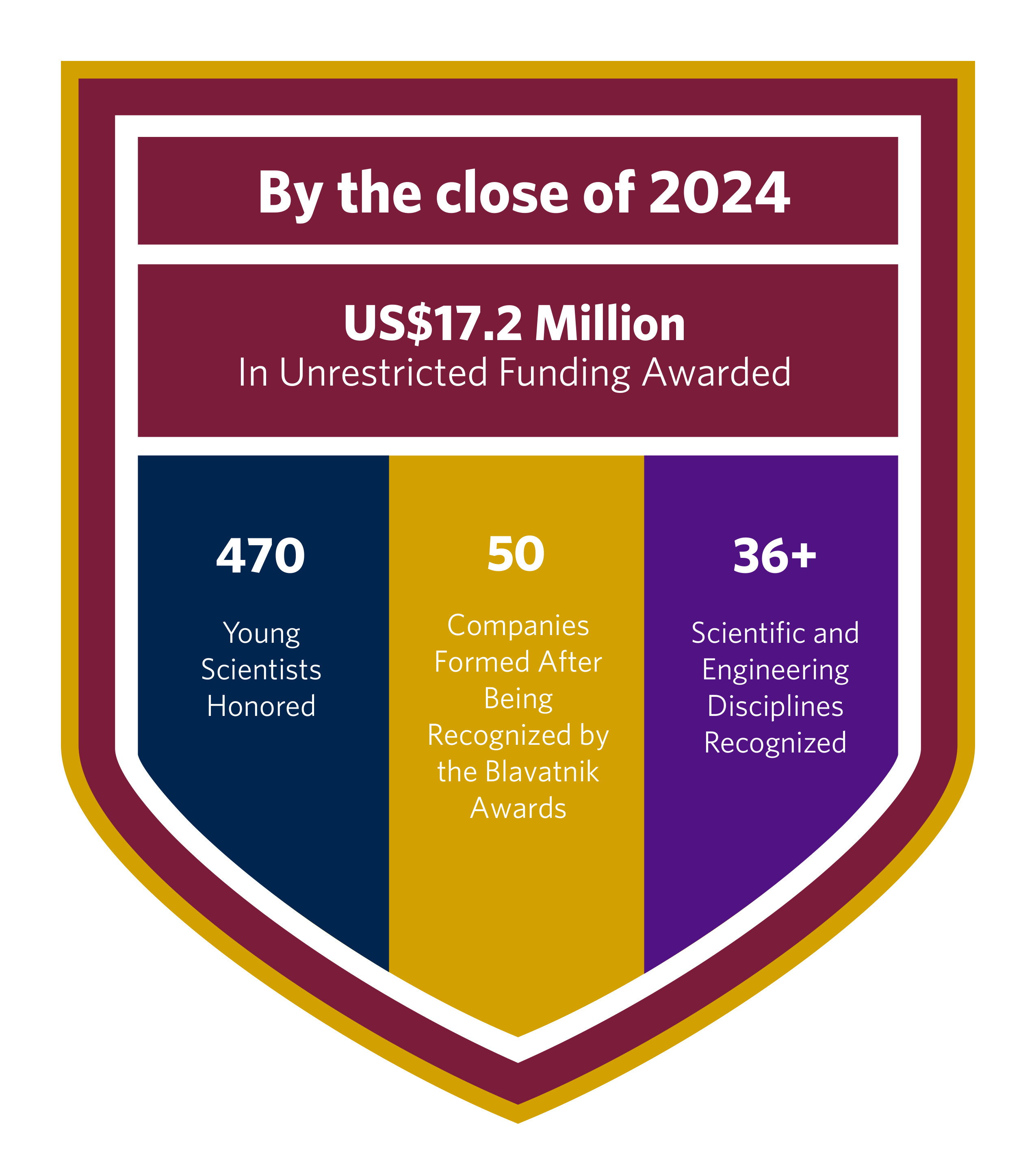The Blavatnik Family Foundation, with the guidance of The New York Academy of Sciences, founded the Blavatnik Awards for Young Scientists in 2007 to celebrate the innovative achievements of young postdoctoral and faculty scientists who work in New York, New Jersey, or Connecticut.
Unlike awards that honor scientists late in their careers, the Blavatnik Awards aim to identify and encourage promising young scientists early in their careers, when they are most in need of funding and recognition. The intense competition for funding presents a growing challenge for scientific researchers—those who receive financial support are in a better position to bolster their early research efforts and are more likely to identify solutions to the most complex scientific questions and to some of society’s most pressing problems.

In 2013, building on the tremendous success of the Blavatnik Regional Awards, the Blavatnik Family Foundation announced its intention to launch the Blavatnik National Awards for Young Scientists, in which faculty members 42 years of age and younger from across the United States are nominated in three categories: Chemistry, Physical Sciences and Engineering, and Life Sciences. Eligible institutions are invited to submit one nomination in each subject category. In each category, ten finalists are identified, with one being selected as the Laureate for that category and winning US$250,000 in unrestricted funds. The Blavatnik National Awards Laureates and Finalists are honored at an awards ceremony at the American Museum of Natural History in New York City each September.
The Blavatnik Regional Awards for Young Scientists also continue to identify outstanding post-doctoral researchers in the tri-state area, recognizing two Finalists and one Winner in Chemistry, Physical Sciences and Engineering, and Life Sciences every year. Blavatnik Regional Awards Winners and Finalists are honored at The New York Academy of Sciences Annual Gala in November.
With the 2017 launch of the Blavatnik Awards for Young Scientists in Israel—in collaboration with The Israel Academy of Sciences and Humanities—and in the United Kingdom, there are now regional, national, and international Blavatnik young scientist honors.
Since the Awards’ inception, there have been more than 7,000 nominations from over 500 institutions. By the close of 2024, the Blavatnik Awards will have awarded prizes totaling over US$17.2 million and will have recognized 470 young scientists and engineers from 53 countries, working in 36 scientific and engineering disciplines. Over 50 companies have been formed by Blavatnik Awards honorees after recognition. The revolutionary ideas and advances of Blavatnik Awards honorees range from the wireless charging of smart cars, and smartphones that can sequence DNA, to gene editing techniques that correct disease-causing mutations and boost crop yield to better feed our world’s population.

Past winners and finalists of the Blavatnik Awards have gone on to achieve significant career success. Today, most postdoctoral honorees are tenured or tenure-track faculty members, some faculty honorees have become department chairs or deans, and some have gone on to become investigators for the Howard Hughes Medical Institute. Awardees have gone on to receive honors such as the Fields Medal, the Breakthrough Prize, a Knighthood, a Technical Achievement Award from the Academy of Motion Picture Arts and Sciences, elected to the National Academy of Sciences, shortlisted for TIME magazine’s Person of the Year, and launched technology companies that are today publicly traded on the New York Stock Exchange and the NASDAQ.
The Blavatnik Science Scholars community, made up of past honorees, now consists of almost 500 brilliant researchers and encompasses a unique combination of scientists and engineers with a wide range of research interests. In 2014, the Blavatnik Science Symposium, now held annually in New York, was established to highlight this community and promote the research of these young champions of science. The symposium features panel discussions, keynote speakers, and research updates from community members. Relationships established through this platform have led to fruitful collaborations and exposes the scholars to cutting-edge science spanning a variety of fields.